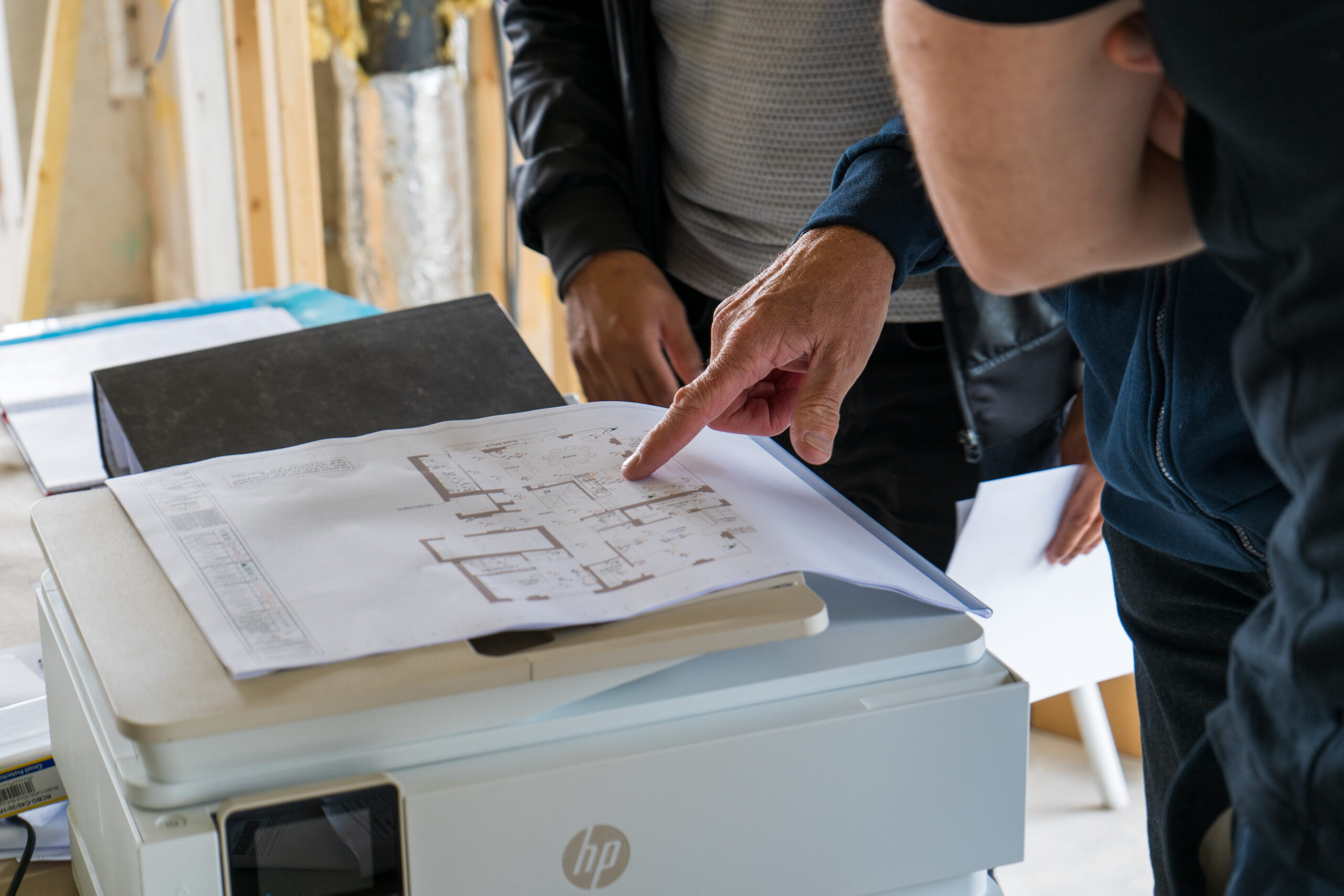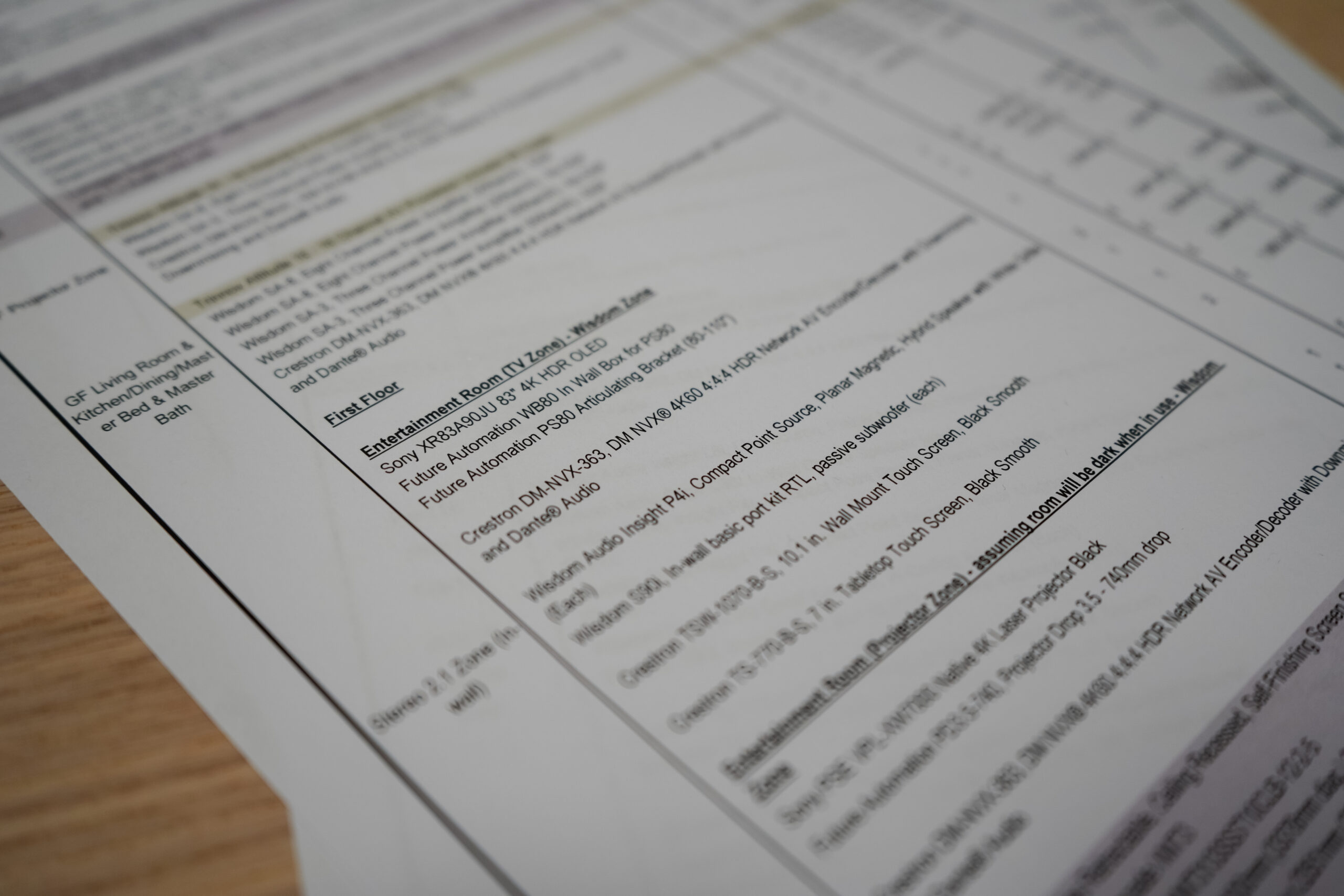Your Smart Home Project – Managing The Budget
Questions Answered | 29-09-2022
Controlling the overall budget for a smart home project, house refurbishment or a new build project is always a challenge. When speaking to clients we often hear the battle that they face with regards to ensuring that the budget is spread equally across all the different elements of the build. In addition to this we are in a time where price increases are constant, not just in our industry but across many different trades.
As an outsider it must also be overwhelming to see a detailed proposal with lines of equipment which don’t really make any sense. Our industry can sometimes seem like somewhat of a black art. It is very difficult for a client to understand the technical terminology which we use every day and therefore how do they understand what it is that they are truly purchasing? How do they make decisions about what to prioritise?
When we work with a new client, we want to ensure that our proposal is right in terms of both functionality, specification and also budget. We want to ensure that the client is comfortable with the overall budget at the time we are appointed and that they clearly understand how this cost has been formulated.
One of our core values is to be ‘open, honest, ethical and fair‘. A really key component of this lies within our sales process. Our proposals are line itemised and broken down per system. For example, we have a section for AV, Network, Lighting Control, CCTV, Intercom, Cinema etc.
We ensure that we break every section down apart from 2-3 single lines which relates to consumables. These are allowances for all of the small materials required to complete the installation such as HDMI leads, connectors, Toslink cables, general cable supply, or light bulbs for example.
Ensuring we have this level of transparency is important to us for two reasons. Firstly, it allows us to spend time with the client going through each room, each system and highlighting the costs associated with these clearly. The client can then decide which elements represent value to them.
Secondly at the end of the project we would amend this to reflect any small changes which might have taken place towards the end of the project – if a bracket wasn’t used for example, it will be omitted. We are then in a position to walk a client through the installation and proposal if required to demonstrate that everything has been supplied.
Quoting at this level of granular detail allows us to work with a client to ‘value engineer’ the proposal if the initial budget figure is too high for them. I have a great deal of experience in this as my role is primarily in Sales. I believe that it is possible to value engineer a proposal in the following 4 ways:
1. Reduce the number of integrated systems
A relatively simple way to reduce the cost is to reduce the scope in terms of the systems which are in place. For example, omitting lighting control and opting for conventional lighting is a very simple way to dramatically cut costs.
It is important to consider the wiring topology of these systems if your property is being rewired or cabled from new. Lighting control systems wire in a completely different manner to conventional lighting. It is possible to implement wireless lighting control at a later date but if the opportunity is there to hard wire this as part of the build, we would always recommend this approach.
Pre-wiring is an option if you are unsure of a system. For example – omit the CCTV but pre-wire from the security cameras to a central location so it is simple to add this at a later stage if required. It is our role to provide advice regarding the implications of adding or removing systems so the client can make an informed decision during the scoping process.
2. Reduce the number of zones
The AV element of our proposal caters for music and TV’s (audio and visual). This will typically be a multi-room system consisting of several rooms or zones. A very simple way to reduce costs is to reduce the number of these zones.
For example, if you were planning on having ceiling speakers in 10 rooms including the kids’ bedroom and kids’ bathroom you could reduce the cost by omitting these 2 rooms and replacing them with a simple Sonos One speaker for example. This would reduce the multi-room audio system down to 8 zones which would provide savings in terms of in-ceiling speakers and also the electronics which power them.
If you were to have a multi-room solution which shares 2 x Sky Boxes, 2 x Apple TVs for example with 6 rooms a way to reduce the cost is to reduce the number of sources (Sky Boxes etc) or the number of TV’s. If one of these TV’s was in the Guest Bedroom, then maybe remove this from the multi-room system and simply rely upon the app’s built into the TV for example as the room may not be frequently used.
This will save on the core system and also remove the need to have a Control4 or Crestron remote in this room.
3. Choose an alternative level of specification
As an industry we have so many different solutions available to us for every system we specify.
As a company we have chosen our core partners to work with for each of the systems and solutions we deliver but within these brands there are often different models and different ranges to choose from with varying price points.
Therefore, to reduce costs, it is worth considering the level of specification and what value there is in selecting an alternative model. For example, a pair of 700-series Bowers & Wilkins floor standing speakers are beautiful and sound incredible but if the room is to be used for a Study, is there scope to consider a 600 series model instead? If the performance difference does not outweigh the cost difference for that exact circumstance, then maybe this is an area to reduce costs?
4. Phase the works
The last way in which to alter the budget is to consider phasing of works. We can help to identify systems which can be planned for and built into the design but postponed until the project is complete or scheduled for a later date to spread the costs.
The most critical decision is the cabling and the infrastructure. The most expensive cable is the one which was not installed. Planning is key.
It is therefore important to ensure that we identify any impact which there may be on the main project and guarantee that consideration has been made to the design so this can simply be expanded or added in the future.
An example of this is pre-wiring for TV’s or speakers in rooms where the client is not quite sure as to how the room will be used. Instead of committing to the cost on Day 1, we can pre-wire and then the option is there to add equipment at a later stage.

Summary:
Value Engineering is not a term which we fear. We welcome and encourage this process with all our clients as it ensures that they truly understand the system that we will deliver for them. Valuable information always surfaces during these discussions, and it gives us the opportunity to continuously tailor the proposal.
We would always advocate that potential clients are given the opportunity to experience the systems we are suggesting for them. We have our Showroom in Guildford, and we can accommodate appointments at any time including evenings and weekends. We also have some incredible demonstration facilities available for us to book across the UK if a client has a specific interest in a certain brand.
We have also carried our personal demonstrations in people’s houses, hired apartments for private viewings – we are willing to go the extra mile to accommodate clients that want to engage with us.
As a company we are not driven by the value of a contract – we are 100% focused on ensuring that the solution we put forward is right for each project.
For project ideas – whether you’re interested in a full home automation project, support with your network and Wi-Fi or installation of a security system, get in touch, we’d be delighted to help.
Katie Sparrevohn – CEO
Check out more useful blogs here.
Back To All

